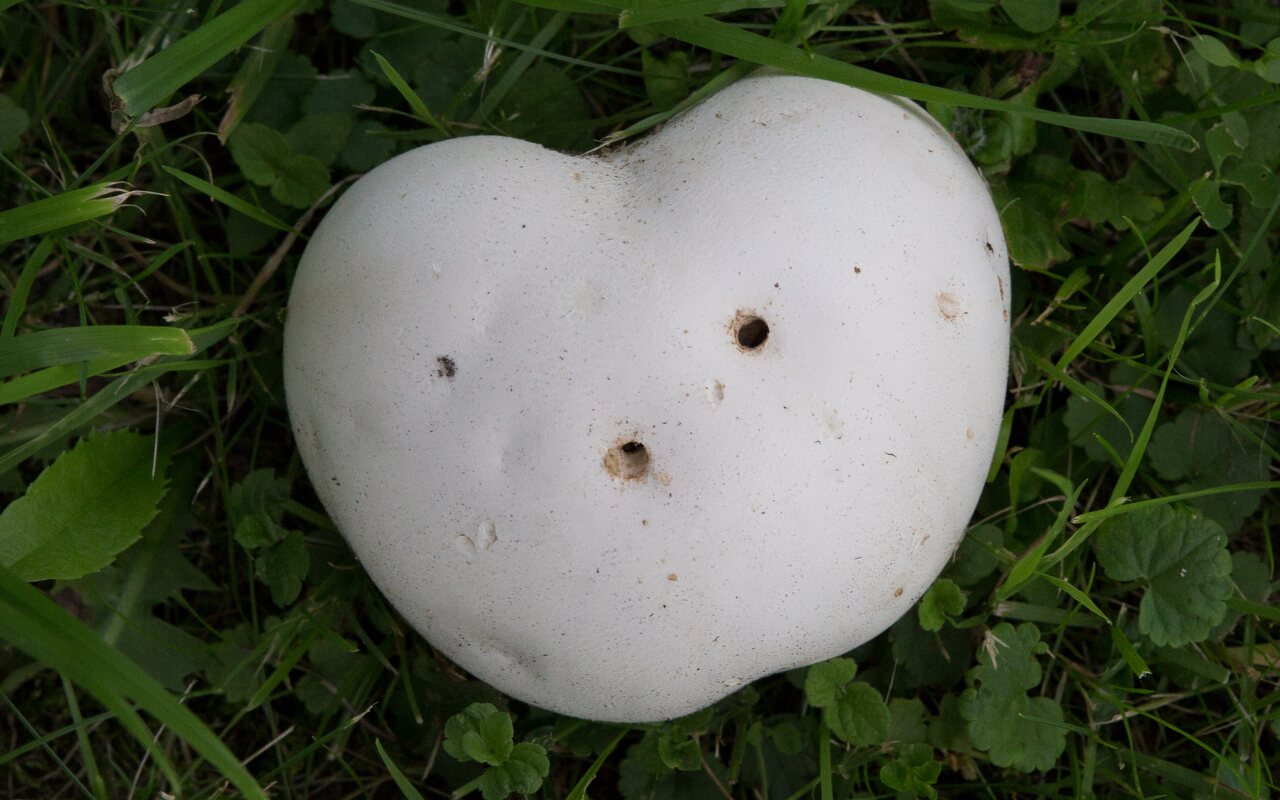
Calvatia gigantea · didysis kukurdvelkis
- Langermannia gigantea
- giant puffball
- Riesenbovist
- didysis kukurdvelkis, didžioji langermanija, milžininis bizdžius
- milzu apaļpūpēdis
- czasznica olbrzymia, purchawica olbrzymia
Giant puffball commonly found in meadows, fields, and deciduous forests usually in late summer and autumn. It is found in temperate areas throughout the world. Most giant puffballs grow to be 10 to 50 centimetres, sometimes to be 90 cm in diameter, some occasionally can reach weights of 20 kg. The inside of mature giant puffballs is greenish brown, whereas the interior of immature puffballs is white. Saprobic, often found on roadside verges, at the edges of fields and among briars, nettles and other rank vegetation in nutrient-rich waste ground and on woodland edges; occasionally the Giant Puffball is found in open woodland or in woodland clearings.
The fruiting body of a puffball mushroom will develop within the period of a few weeks and soon begin to decompose and rot, at which point it is dangerous to eat. Young are edible while interior is white and firm, very faint, pleasant odour, no distinctive taste.
Puffballs are a known styptic and have long been used as wound dressing, either in powdered form or as slices 3 cm thick. The fungus was often harvested prior to battles for this purpose.
Lietuvoje retas, nerinkite, vaisiakūniai gali užaugti iki 10 kg, jauni valgomi. Vaisiakūnis iš pradžių būna baltas, sendamas gelsvėja. Paviršius lygus ar apaugęs smulkiais, minkštais plaukeliais. Bręstant vaisiakūniui, luobelė sutrūkinėja į atskirus gabalus ir grybas pamažu suyra. Auga ganyklose, parkuose, soduose, miškų pakraščiuose.
‥
0 comments
Add a comment
Comments